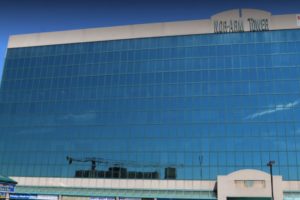One of the main concerns of paying off creditors is the thought of compromising your financial future in settling debts in the present. In particular, people are worried that creditors will seize all or part of their pensions in order to settle debts.
The good news is that in most cases, creditors are not allowed to touch your retirement income. The bad news is that in some cases, mostly depending on where they live, the type of retirement fund they hold and the creditor making the claim, money set aside for retirement can be used in the settlement of your debts.
First among the variables is the province of residence. Although there is federal government protection of retirement savings under provisions in the Bankruptcy and Insolvency Act, it depends on the laws of the province or territory when it comes to shielding your investments from creditors. British Columbia, Alberta, Saskatchewan, Manitoba, Prince Edward Island, and Newfoundland and Labrador have laws mimicking the federal regulations.
In most cases, the funds are protected unless you file for bankruptcy, in which case a trustee gets to decide how to liquidate them in order to settle debt. In the cases mentioned above, the trustee can only look at savings acquired within 12 months leading up to the filing for bankruptcy. In some provinces, there are no time restrictions and in others, funds are locked in and sheltered regardless of the date of bankruptcy filing.
That’s where the type of retirement fund comes in. Some companies provide pension plans and put funds on behalf of the employee into either locked-in RRSPs (Registered Retirement Savings Plans) or RPPs (Registered Pension Plans). Those funds are generally protected from creditors either in a bankruptcy or outside of it. The rule of thumb is that if you don’t have access to locked-in funds, neither do your creditors.
However, you can lock in your self-directed RRSPs or GICs (Guaranteed Investment Certificates) for a set time and when the locked in period expires, they are accessible. The exception in terms of self-directed retirement income savings are RRIFs (Registered Retirement Income Funds) held in a life-insurance contract provided that money isn’t deposited in order to deliberately shelter it from creditors, proof of which must be determined in the courts.
In general, your government issued retirement earnings — Old Age Security (OAS) and CPP (Canada Pension Plan) or QPP (Quebec Pension Plan) — cannot be touched by creditors. There are, of course, a few exceptions.
The primary one is, naturally, the CRA (Canada Revenue Agency), whose broad sweeping powers allow it to tap into whatever means it deems necessary in order to settle tax debts. The CRA will simply send a letter of direction to Employment and Social Development Canada (ESDC) — the administrators of OAS and CPP programs — and/or your bank with instructions of how much to withhold to settle your debts. The amount can be negotiated with the CRA.
Your bank can also have access to those funds if you owe them money due to mortgage or credit card debt, and can tap into the accounts into which you deposit the pension or retirement funds. Again, locked-in funds aren’t touchable but if you release those funds into an account with the bank to which you owe money, they can be seized.
Your ex-spouse is another exception, in the case of money owed either as part of a separation or divorce settlement or because of not fulfilling your support obligations (spousal or child). Up to 50% of your pension can be tapped into to make up owed money, but you can petition the courts to reduce or eliminate the debt owing.



